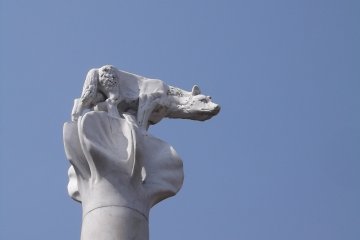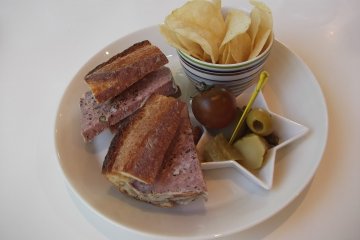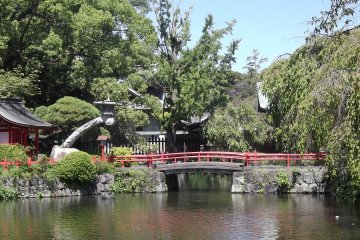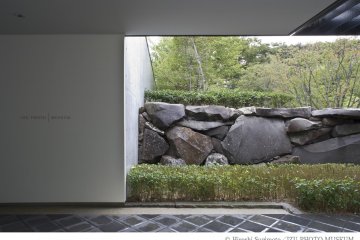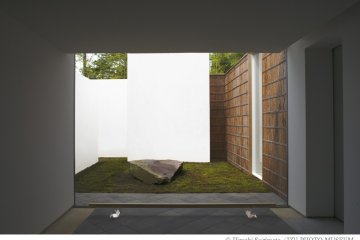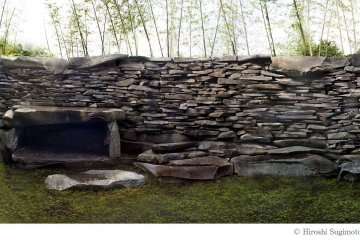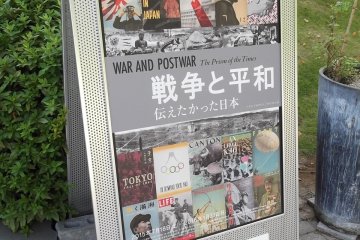In the hills north of Mishima at the head of the Izu Peninsula, the Clematis Garden is a pleasant cluster of museums, shops and restaurants, which makes for an enjoyable day out. One of the museums is the Izu Photo Museum, a small but appealing museum dedicated to photography; it displays not only photographs but also posters, magazines, books and other items in themed exhibitions, showing how photographs are used practically in media and other contexts.
The building has a simple, minimal design, with plain walls so as not to distract from the exhibits, and a frosted glass door that glides open like something from Star Trek. By the entrance as you go in (or out) there's a small gift shop that sells a very wide range of photography books - mostly in Japanese, I expect - as well as postcards, camera straps and other gifts.
The exhibition I saw was of photography from around the time of the Second World War, and featured a diverse mix of media: magazines, travel promotion brochures and posters, prints, contact sheets, scrapbooks. It was titled "War and Postwar: the Prism of the Times", and all these items together gave a comprehensive overview of how photography was used to give a desired impression, on both sides of the Pacific.
There were plenty of strikingly composed images: a pagoda framed by foliage, horse-carts in front of a shrine gate, an aerial shot of Tokyo's Marunouchi district, looking very spacious compared with today. The displayed covers of Dai Nippon ("Great Japan") magazine mixed culture and overt militarism: a kabuki scene, ranks of saluting troops, a Buddha statue, men in sumo-style loincloths exercising on the deck of a warship in the shadow of some imposing gun barrels.
Quite apart from the photography, the exhibits were interesting as historical pieces in their own right, offering a view of how the media did their job in the past. Much of it I found very jarring, especially some of the coverage in American magazines of the Second Sino-Japanese war. One picture was captioned "A pyre of Japanese soldiers blazes merrily" ("merrily"?); the Chinese citizens apparently resented "their stumpy conquerors"; and one spread had a graphic sequence of photos showing the pursuit, capture and execution of a Chinese resistance fighter - immediately opposite a page of tips for gushing brides-to-be.
I talk about all this to give an idea of the thoughtful, inventive curation of the exhibitions. Past exhibitions have included "Suspending Time", where the deceased are kept alive by photos taken before their deaths; "Visions of Fuji", showing how portrayals of Mount Fuji have changed with socio-cultural changes in Japan; and "Light Reaching the Future", semi-abstract photographs using extreme close-ups, filters and other effects. Every exhibition is accompanied by a small brochure in both English and Japanese, giving more insight into the subject and techniques used.
The Clematis Garden is twenty minutes' drive from Mishima station; there's a free hourly shuttle bus from stand 3 outside the station's north exit. The museum is open daily from Thursday to Tuesday, opening on Wednesday and closing on Thursday when a National Holiday falls on a Wednesday. The museum opens at 10:00am, closing at 4:30pm from November to January, 5:00pm from February to March, 6:00pm from April to August, 5:00pm in September and October. Admission is ¥800 for adults, ¥400 for high school and university students, free for younger children, with a discount for groups of twenty or more.



